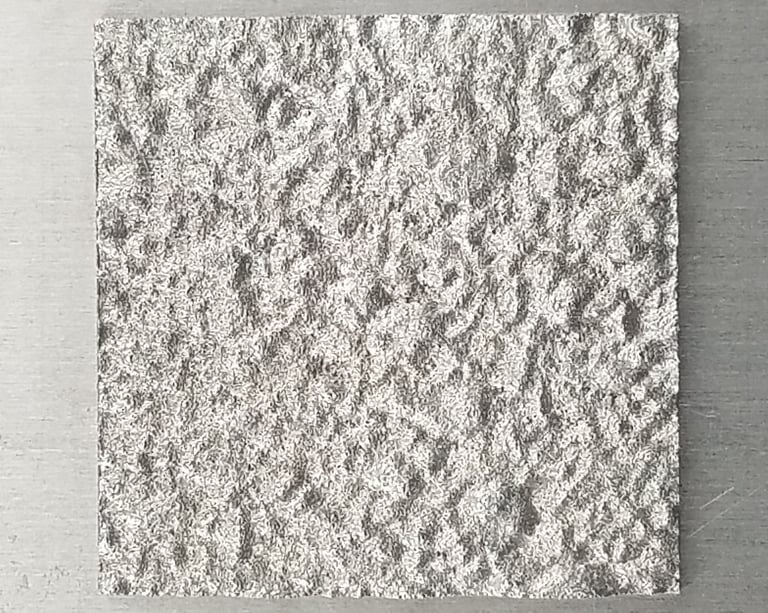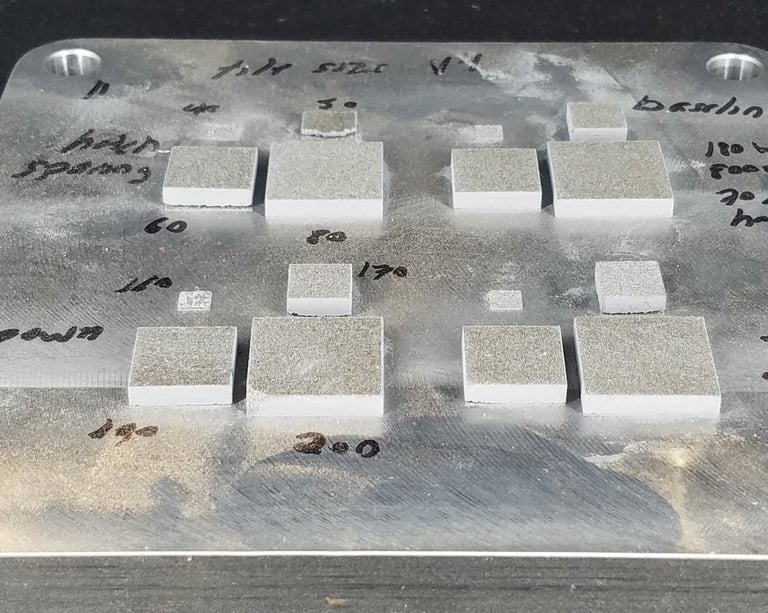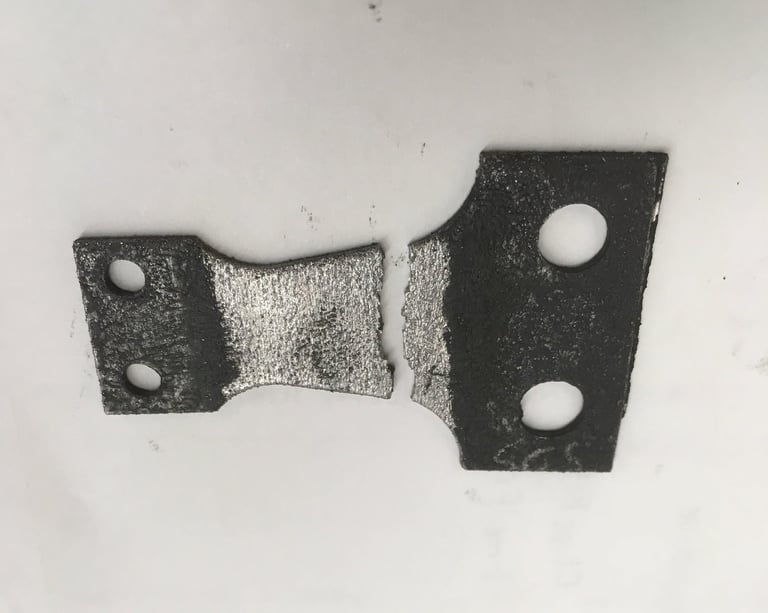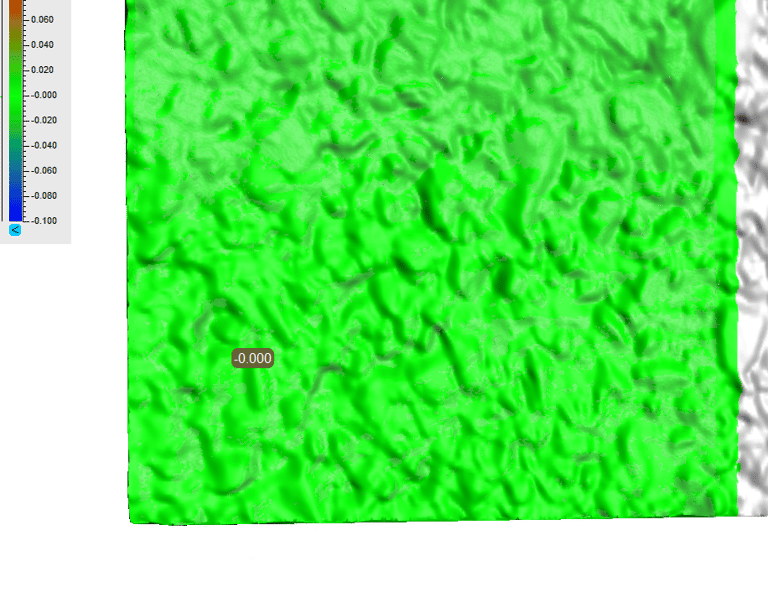ARTIST
Aircraft tire performance hinges on surface interaction — and runway testing tiles have long been a bottleneck: costly, inconsistent, and limited in variety. This project tackled that head-on. By capturing real runway textures via surface scanning and translating them into additive-ready mesh data, high-fidelity replicas were fabricated using Selective Laser Melting (SLM). The process combined hybrid material development with fine-tuned SLM parameters and a custom texture correction algorithm. The result: mechanically sound, precise clones of real-world runway textures — engineered for repeatable, on-demand use in tire testing environments.
Advanced Runway Texture Imitations for Specialized Tiles Fabrication via Selective Laser Melting
Year: 2018
Customer: AF
The Puzzle
What was the challenge? Why was it worth solving?
Aircraft tires don’t just roll — they grip, steer, brake, and survive harsh landings on snow, ice, water, and heat-scorched runways. Every touchdown eats away at that performance. Predicting how a tire will wear down? That’s a messy equation involving tire design, aircraft behavior, flight operations, and the runway itself — all interacting in unpredictable ways.
To test and improve tire life, the USAF uses physical runway replicas: concrete tiles molded to simulate surface textures. But the current method is slow, expensive, and often lacks fidelity — especially when trying to mimic the wide variety of real-world surfaces like tarmac, gravel, or degraded pavement. It's like testing a race car on a cardboard track.
What’s needed is a faster, more accurate way to replicate runway textures — one that captures the fine detail, handles diverse materials, and scales without compromise.
The Game Plan
How the problem was approached — strategy, tools, and intent.
The goal was clear: create runway surface tiles that didn’t just look the part but could hold up under the punishing conditions of high-speed tire testing. Achieving both visual fidelity and mechanical durability required more than off-the-shelf solutions.
The team relied on UTC’s open-architecture Selective Laser Melting (SLM) system, which offered full control over process parameters and the freedom to experiment with novel metal/ceramic composite feedstocks. Unlike closed commercial systems, this platform allowed for deep process tuning, material flexibility, and seamless integration of monitoring and correction tools — all critical to customizing performance.
To replicate real runway textures with precision, a two-stage process was developed:
➡️ First, surface scans of actual runways informed SLM fabrication using optimized feedstock and build parameters
➡️ Then, a laser ablation protocol was applied to fine-tune micro-texture deviations and ensure high-fidelity texture reproduction
This approach combined the strengths of additive and subtractive processes, delivering tiles that didn’t just imitate — they simulated.
What Actually Happened
The results. The breakthroughs. Maybe even a few surprises.
Phase I wrapped with a strong proof of concept: metal tiles, fabricated by SLM, that captured critical surface details and withstood real stress. Here's the snapshot:
✅ Developed initial laser parameters for four alloys:
Inconel 718
Stainless Steel 316L
AlSi10Mg (selected for future work)
Tungsten Carbide–Cobalt (processed for the first time via SLM, but not selected due to OSHA constraints)
🧪 Fabricated and tested fatigue specimens (Inconel 718, SS316L, AlSi10Mg)
Achieved densities up to ~100%
All specimens survived ~10,000 fatigue cycles at 200 MPa stress
🧱 Printed 3×3" runway surface replicas using Inconel 718
Scans confirmed high-fidelity match to macro-texture of the original runway
📐 Completed conceptual design for a 24" LPBF system
Show & Tell
Visuals, prints, textures, data — what it looked like in the real world.








Runway tile in AlSi10Mg — printed, not poured. Lightweight, tough, and ready for abrasion
First-of-their-kind WC-Co cubes — SLM meets impossible metallurgy. (Yes, it worked.)
This AlSi10Mg specimen took 10,000+ cycles at 200 MPa before calling it quits
Overlay of point cloud vs. original runway scan — when precision meets texture, and wins.
Lessons from the Lab
What worked. What didn’t. What was learned along the way.
Open architecture systems unlock serious agility — critical when your powder options (and ambitions) don’t fit inside someone else’s box.
Processing WC-Co via SLM? ✅ Possible. Practical? Let’s just say OSHA has opinions.
AlSi10Mg emerged as the more scalable, safer path forward — not just printable, but dependable under stress.